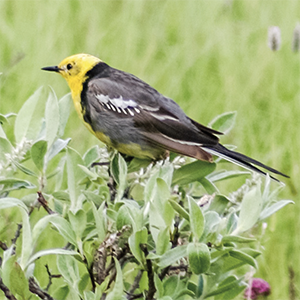Does the expansion of the species’ breeding range also involve the establishment of new migratory routes and new wintering ranges? The case of the citrine wagtail Motacilla citreola (Pallas, 1776)

Submitted: 2 May 2021
Accepted: 19 August 2021
Published: 20 May 2022
Accepted: 19 August 2021
Abstract Views: 2412
PDF: 876
APPENDIX: 466
APPENDIX: 466
Publisher's note
All claims expressed in this article are solely those of the authors and do not necessarily represent those of their affiliated organizations, or those of the publisher, the editors and the reviewers. Any product that may be evaluated in this article or claim that may be made by its manufacturer is not guaranteed or endorsed by the publisher.
All claims expressed in this article are solely those of the authors and do not necessarily represent those of their affiliated organizations, or those of the publisher, the editors and the reviewers. Any product that may be evaluated in this article or claim that may be made by its manufacturer is not guaranteed or endorsed by the publisher.
Similar Articles
- Tiziano Londei, A macrorhynchos-like Eurasian Nutcracker (Nucifraga caryocatactes) in the Dolomites with a very abraded ring: an aged immigrant, or a locally born bird? , Rivista Italiana di Ornitologia: Vol. 88 No. 2 (2018)
- Mauro Mencarelli, Niki Morganti, Francesca Morici, Birdlife in the Oasis of Protection of Fauna of S. Gaudenzio adjacent areas , Rivista Italiana di Ornitologia: Vol. 82 No. 1-2 (2012)
- Grzegorz Kopij, The role of peri-urban wetland and meadow habitats in the protection of trans-Saharan migrant passerine species in a central European city , Rivista Italiana di Ornitologia: Vol. 88 No. 1 (2018)
- Riccardo Groppali, Urban Birds in Cremona 11 years after. , Rivista Italiana di Ornitologia: Vol. 82 No. 1-2 (2012)
- Fabiano Sartirana, Rudy Valfiorito, [Nesting of Golden Eagle (Aquila chrysaetos) at an exceptional altitude for the Italian Alps] , Rivista Italiana di Ornitologia: Vol. 88 No. 2 (2018)
- Fabrizio Florit, Damijana Ota, Roberto Parodi, The monitoring of breeding birds in Friuli-Venezia Giulia , Rivista Italiana di Ornitologia: Vol. 82 No. 1-2 (2012)
- Giovanni Ferrara, Guido Tellini Florenzano, Eustachio Tarasco, Tommaso Campedelli, Oreste Triggiani, Spatial and temporal dynamics along the interior-mouth environmental gradient of the river Ofanto (Apulia) , Rivista Italiana di Ornitologia: Vol. 82 No. 1-2 (2012)
- Franco Carpegna, Giovanni Soldato, Roberto Toffoli, Breeding bird communities in an area of the Northern Apennines (Piedmont, NW Italy) , Rivista Italiana di Ornitologia: Vol. 88 No. 2 (2018)
- Alessio Franceschi, Distribution and consistency of Yellow-legged Gull, Larus michahellis, along the coastal shore in continental Tuscany , Rivista Italiana di Ornitologia: Vol. 82 No. 1-2 (2012)
- Flavio Ferlini, Migration Strategies of Birds of Prey in Western Palearctic , Rivista Italiana di Ornitologia: Vol. 92 No. 1 (2022)
<< < 9 10 11 12 13 14 15 16 > >>
You may also start an advanced similarity search for this article.


 https://doi.org/10.4081/rio.2022.540
https://doi.org/10.4081/rio.2022.540



